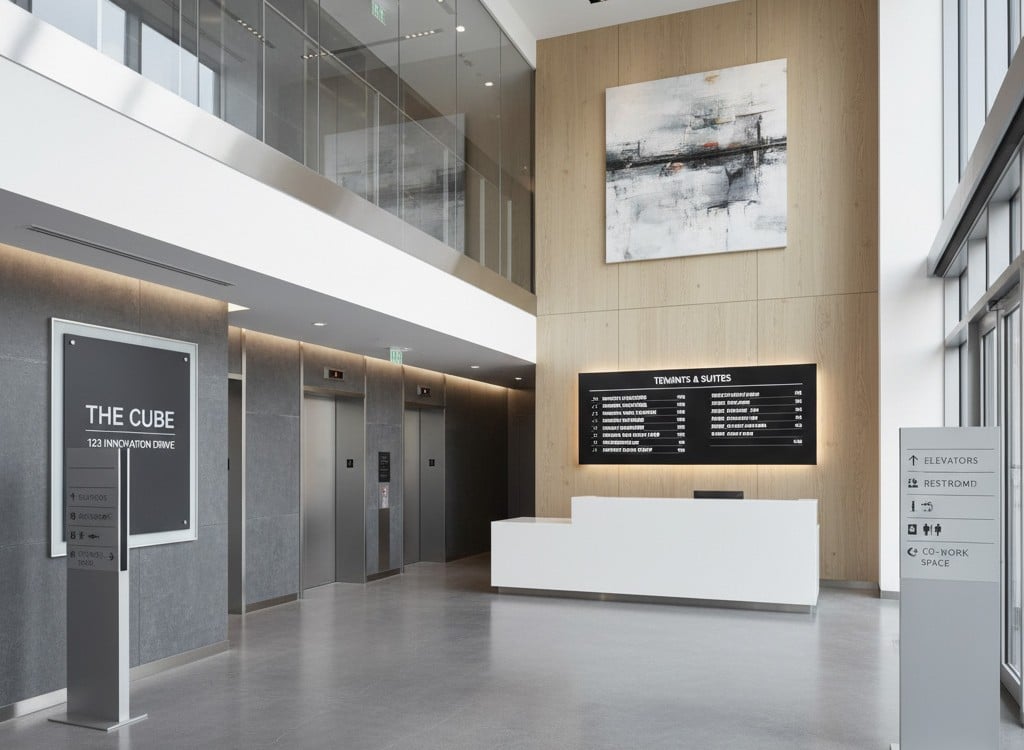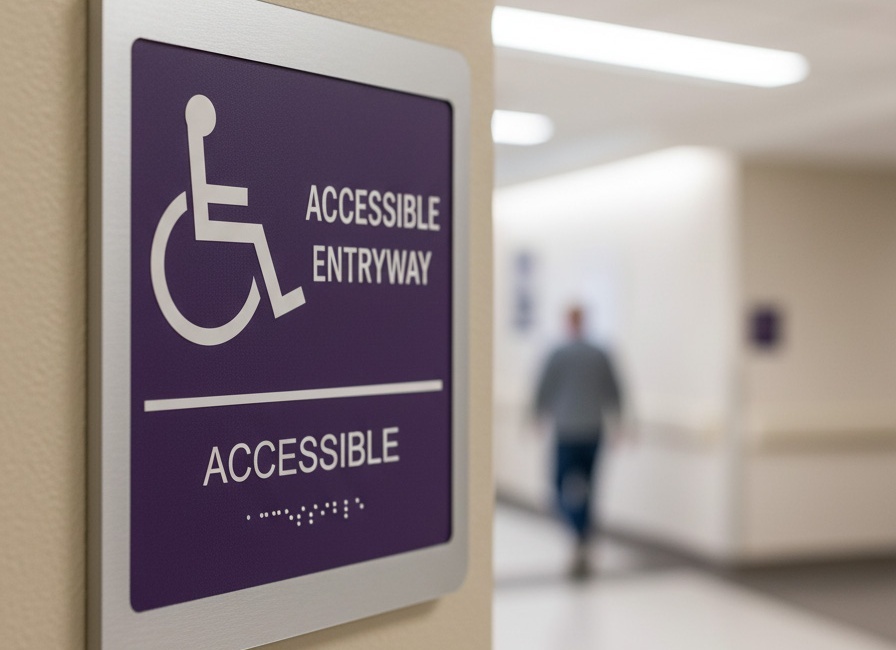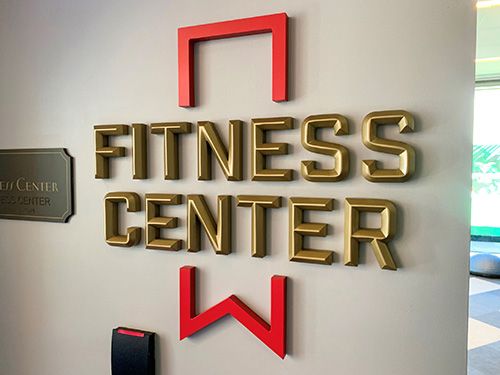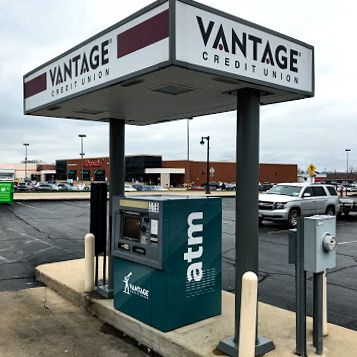The Science Behind Color and Design in Fleet Graphics
Every fleet vehicle you deploy is an opportunity to make a statement, one that speaks your brand before a person even reads a word. Research shows...
5 min read
Craftsmen Industries Nov 6, 2025 1:18:28 AM

Architectural signage is more than a tool for displaying names or directions; it plays a crucial role in the design and functionality of a building. Unlike standard signs, architectural signage is thoughtfully integrated into the environment, guiding visitors intuitively while complementing the building’s style and enhancing its visual appeal.
Effective signage not only improves navigation but also positively impacts the overall user experience, creating spaces that are both functional and aesthetically pleasing.
A recent research on the role of consistency in brand messaging shows that well-designed architectural signage increases engagement, reduces confusion, and encourages visitors to interact with the space more confidently. Beyond wayfinding, signage reinforces brand identity, communicates professionalism, and contributes to the architectural narrative.
In this guide, we examine how architectural signage balances functionality with design, influences visitor perception, enhances user satisfaction, and strengthens a building’s identity, highlighting its essential role in modern architectural and commercial spaces.
Architectural signage serves two equally important roles: guiding visitors effectively while complementing the visual design of the environment.
Architectural signs help people navigate spaces efficiently. From office buildings to public institutions, clear signage reduces confusion, prevents congestion, and ensures accessibility for all visitors.
A study utilized virtual reality to compare various signage placements and found that wall-mounted signs were more effective in guiding individuals unfamiliar with a building compared to ceiling-hanging or floor-based signs.

Wayfinding signage must be intuitive. Effective signage includes ADA-compliant elements such as braille, tactile surfaces, and high-contrast visuals, which ensure inclusivity and accessibility.
Proper placement along corridors, entrances, and decision points allows visitors to navigate confidently without assistance.
A study on the importance of accessible and inclusive wayfinding signage highlights the need for signage that accommodates a range of sensory needs, suggesting that inclusive design is essential for effective navigation in diverse environments.
Architectural signs guide all visitors, including those with disabilities, by including braille, tactile features, and clear visual cues, improving safety and usability.
Architectural signage transcends its functional purpose by contributing significantly to the visual appeal and identity of a space.
Thoughtfully designed signage not only guides visitors but also enhances the overall aesthetic experience, reinforcing brand identity and complementing the architectural elements of a building.
The choice of materials such as metal, glass, acrylic, and wood plays a pivotal role in harmonizing signage with the architectural style.
Materials should complement the building’s design while maintaining durability and visual appeal.
Typography, color schemes, and lighting are meticulously chosen to ensure readability and visual harmony. For example, brushed metal letters on a modern glass façade convey professionalism, while wooden signs in a rustic lobby enhance warmth and texture.
A study on the impact of architectural design on users’ emotional experience found that aesthetically pleasing signage positively influences users’ emotional responses and perceptions of space. Well-designed signage can create a more inviting and engaging environment, improving the overall user experience.
Well-designed architectural signage that aligns with a building’s aesthetics communicates professionalism, reinforces brand identity, and leaves a lasting positive impression.
In addition to these qualitative effects, there’s measurable evidence showing how visual engagement can influence behavior: studies reveal that in-store digital signage can increase the likelihood of customers purchasing displayed items by 8.1 %. This underscores how clarity, attractiveness, and placement of visual elements can trigger action.
So yes, architectural signage can absolutely influence brand perception. When signage complements a space's design, it strengthens brand identity and gives visitors a more professional and memorable impression.
Achieving the perfect balance between functionality and aesthetics is the central challenge in architectural signage.
Signs must be strategically positioned for maximum visibility without obstructing the design. Consider sightlines, lighting, and typical visitor flow when installing signage.
For example, directory signs in a hotel lobby should be positioned at natural decision points near elevators or entrances.
Fonts, size, and contrast are critical for readability. Minimalist fonts may look sleek, but must remain legible from a distance. Combining font clarity with visual design ensures that signage is both attractive and functional.
Architectural signage plays a critical role in commercial and corporate environments, where it impacts both brand perception and visitor experience.
Beyond providing directions, signage serves as a strategic tool to reinforce a company’s identity while ensuring that customers and employees navigate spaces efficiently and confidently.
Architectural signage is a powerful medium for reinforcing a brand’s personality and values. Businesses create a cohesive visual identity that resonates with visitors by integrating logos, color schemes, typography, and messaging into the design.
Consistent and thoughtful signage strengthens brand recognition and ensures that every visitor interaction reflects the company’s core values.
Intuitive, aesthetically pleasing signage enhances the user experience by reducing stress, confusion, and misdirection. Well-placed signs guide visitors efficiently, ensuring smooth movement through lobbies, hallways, and multi-level buildings.
Effective architectural signage not only helps people navigate but also shapes how they perceive a business.
Signage that is visually aligned with the brand conveys professionalism, attention to detail, and care for the visitor experience. This positive perception can lead to increased trust, loyalty, and repeat engagement.
Effective signage improves navigation, reduces frustration, and reinforces brand identity, resulting in higher visitor satisfaction, engagement, and a more positive overall experience.
Architectural signage is evolving rapidly, driven by technology, sustainability, and changing design preferences. Modern signage goes beyond static displays to create interactive, adaptable, and visually compelling experiences.
Digital signage allows for real-time updates, interactive content, and targeted messaging, which keep visitors informed, enhance wayfinding, and create a more engaging and dynamic environment.
Architectural signage is a vital tool that blends aesthetics with functionality. When designed thoughtfully, it guides visitors, strengthens brand identity, complements architectural style, and enhances the overall user experience.
Investing in cohesive, visually integrated signage improves both navigation and perception, ultimately elevating the space and leaving a lasting impression.
At Craftsmen Industries, we specialize in creating custom architectural signage that seamlessly integrates design and function. Our team ensures that each sign not only guides and informs but also reinforces your brand identity and complements the architectural aesthetics of your building.
Transform your building with Craftsmen Industries signage that guides, engages, and impresses visitors. Contact us today to design signage that elevates your space and creates a lasting impression.
Metal, glass, acrylic, and wood are common choices, selected to match the building’s style and durability needs.
Lighting ensures visibility in low-light conditions and enhances the sign’s visual appeal, including options like backlighting, halo effects, and integrated LEDs.
Yes. Outdoor signage requires weather-resistant materials and often includes digital or illuminated components for visibility.
Typically, every 3-5 years, or whenever branding or technology changes occur, to maintain relevance and functionality.
Architectural signage integrates with the building design, balancing aesthetics with functionality, whereas standard signage primarily emphasizes visibility and messaging.

Every fleet vehicle you deploy is an opportunity to make a statement, one that speaks your brand before a person even reads a word. Research shows...

Retail signage is everywhere. Whatever your business, you must invest in quality signs to grab attention, help visitors find you, advertise...

Retail signage gives potential customers the first impression of your brand. Quality retail graphics can attract people to your store, help create a...